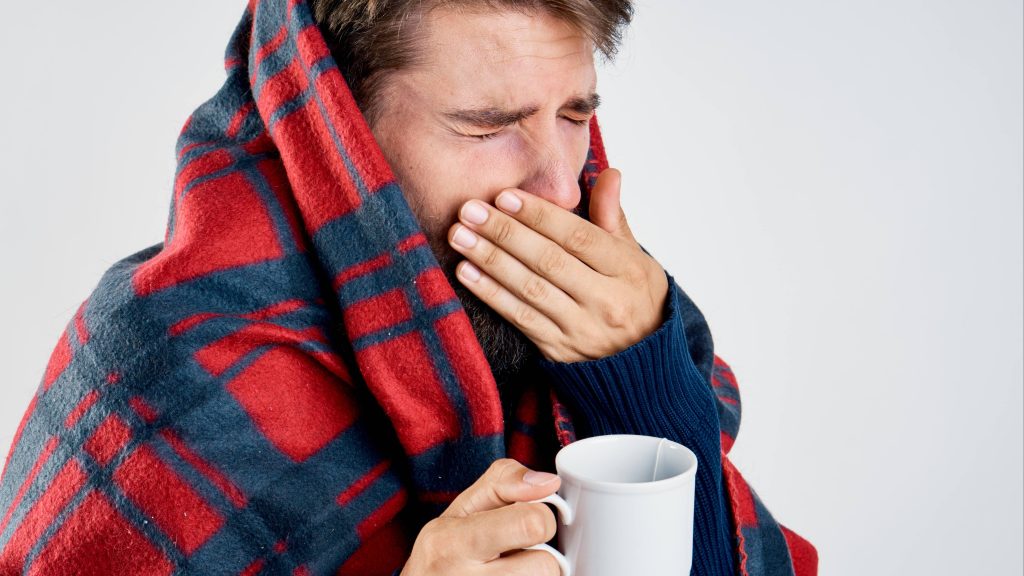
Flu season is something everyone should prepare for, especially amid the COVID-19 pandemic. This article is written by Jeff Green, M.D., a Family Medicine provider at Mayo Clinic Health System in Fairmont.
_________________________________
Influenza, or the flu, typically peaks in January and February, and it's associated with illness ranging from the mild to the severe. At times, patients with flu-related complications may need to be hospitalized. The Centers for Disease Control (CDC) estimates that influenza-related deaths annually range in the tens of thousands.
What is the flu?
Flu is a general term for seasonal influenza, which is a viral infection that attacks your respiratory system. Symptoms often come on suddenly and may seem like a cold at first, with a runny nose or congestion, sneezing and sore throat.
These symptoms typically progress and may include symptoms also common with COVID-19, including:
- Fever or feeling feverish (not all will experience fever with the flu)
- Body aches and muscle stiffness
- Chills and sweats
- Headaches
- Cough
- Fatigue and weakness
- Nasal congestion
If you have any of these shared symptoms, contact your health care team for guidance. You may need testing for both. Learn more about the similarities and differences between COVID-19 and the flu.
It's important to note that seasonal influenza is not the same thing as what many people refer to as the stomach flu, which is a common term for an intestinal infection that causes diarrhea, abdominal cramping, nausea and vomiting.
How does the flu travel?
The influenza virus travels through the air in droplets. You can inhale the droplets when an infected person sneezes, coughs or speaks and aerosolizes the virus. Less likely, you also can pick up the virus by touching objects previously contaminated and then inoculate yourself by touching your eyes, nose or mouth.
How does the flu affect people?
If you are young and healthy, the flu usually is self-limiting, meaning it will resolve with supportive care. However, high-risk people can develop serious complications from the flu — most notably, pneumonia — which can lead to respiratory failure and death.
People in the high-risk category include:
- Young children
- Adults over age 65
- Pregnant women
- People with chronic illnesses, especially chronic lung conditions
- People with weakened immune systems
How can chances of getting the flu be decreased?
There are several simple steps you can take to decrease your chance of getting the flu:
1. Get an annual vaccination.
The CDC recommends annual flu vaccination for everyone 6 months and older. The flu vaccine is available as an injection or a nasal spray. While the vaccine isn’t 100% effective, it is, by far, your best defense from getting the flu. You cannot get the flu from being vaccinated, as the vaccination contains inactivated, or killed, virus or weakened virus incapable of causing the disease. Find out more about local vaccination clinics near you.
2. Wash your hands.
Practicing good hand hygiene not only can keep you from catching the flu, but also prevents other common infections. Scrub your hands vigorously for at least 20 seconds with soap and water. Alcohol-based hand sanitizer also can be effective. Learn how to clean up your hand-washing skills, and download a flyer and coloring sheet about hand-washing.
3. Cover your coughs and sneezes.
Whenever you cough or sneeze, you should cover your nose and mouth with a tissue, or use the “vampire” method by pulling your arm up and coughing or sneezing into your sleeve at the elbow. Try not to cough or sneeze into your hands.
4. Social distancing.
The influenza virus spreads easily wherever people congregate, so avoiding groups can lower your chances of catching the flu. You also should stay home when ill to prevent further spread of the virus.
Usually, rest and drinking plenty of fluids are the two best treatments for most cases of the flu. Antiviral medications, which can shorten the duration of symptoms, may be appropriate for some people. If symptoms progress and are severe, or if you are at a high risk for influenza-related complications, then seeing your health care provider early is an important part of protecting your health.
###
Mayo Clinic Health System consists of clinics, hospitals and other health care facilities that serve the health care needs of people in communities in Iowa, Minnesota and Wisconsin. The community-based providers, paired with the resources and expertise of Mayo Clinic, enable patients in the region to receive the highest-quality health care close to home.







